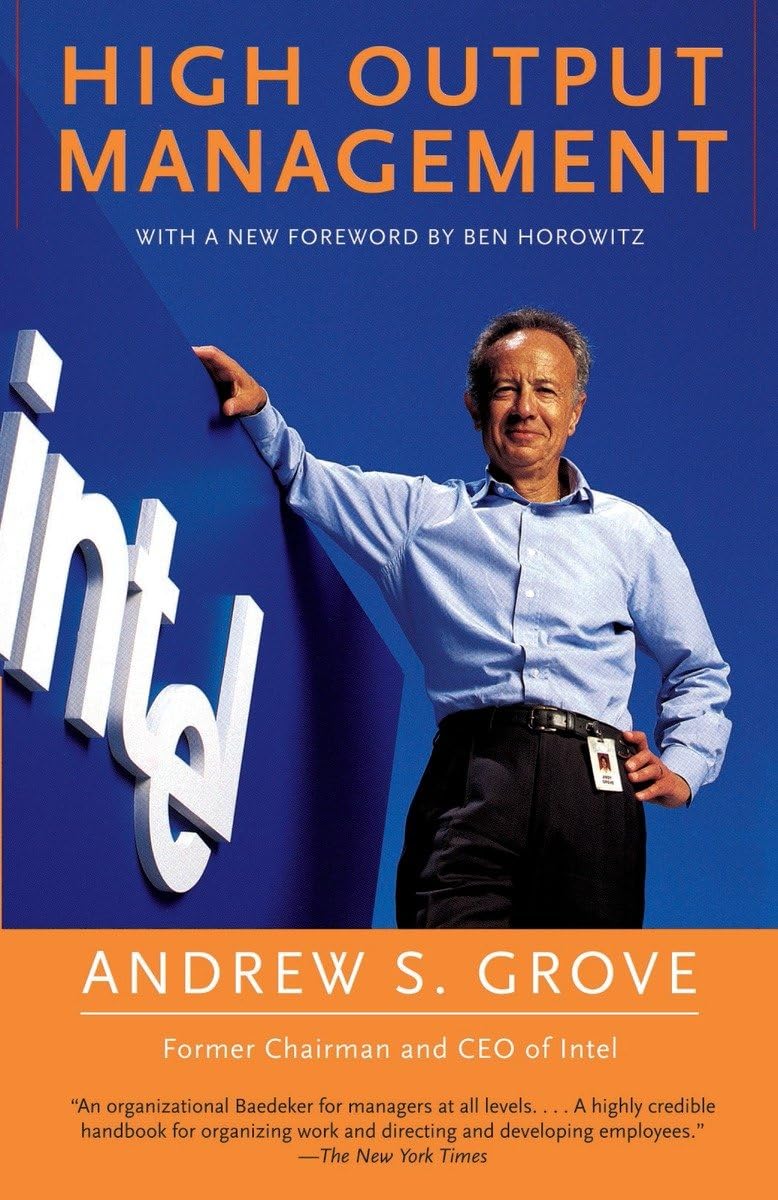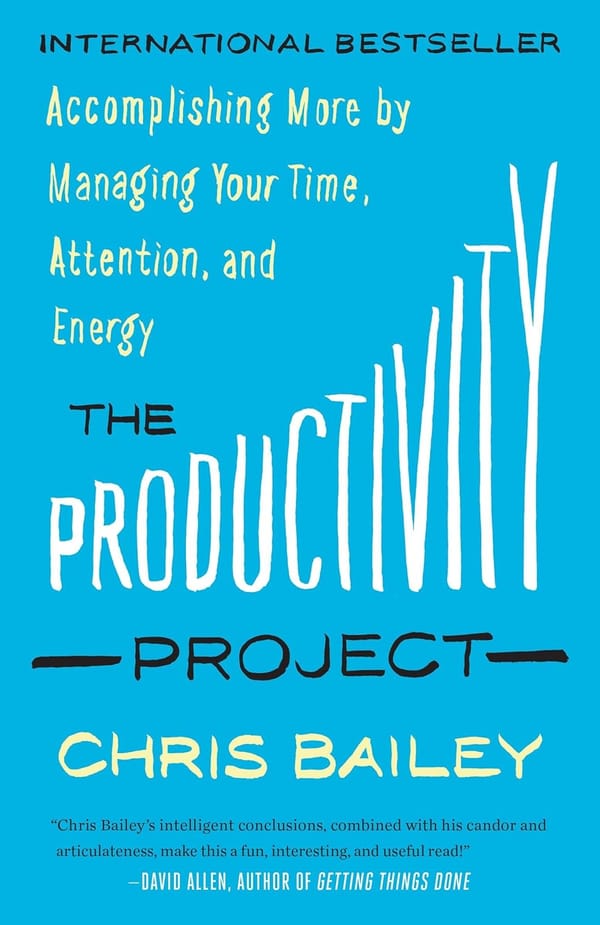High Output Management - Book Notes
If you enjoyed my review, consider supporting me by using the affiliate links below to purchase the book. Your kindness fuels my passion for sharing captivating reads with you!
🚀 The Book in 3 Sentences
- "High Output Management" explores effective production and management strategies, emphasizing the importance of optimizing production flows, monitoring key indicators, and understanding managerial leverage.
- The book underscores the significance of delegation, motivation, and adaptive management styles based on task-relevant maturity.
- It provides insights into performance reviews, control mechanisms, and the planning process, offering a comprehensive guide for enhancing managerial productivity and achieving high output in organizational settings.
👱 Who Should Read it?
"High Output Management" is particularly valuable for individuals in leadership and managerial roles, as well as those aspiring to such positions. Business executives, managers, and team leaders can benefit from the book's insights into optimizing production processes, effective delegation, and strategic management approaches. Professionals seeking to enhance their understanding of organizational productivity, performance assessment, and leadership styles will find the book to be a valuable resource. Additionally, individuals studying business management or interested in the practical aspects of organizational efficiency may find the book insightful.
🍀 How the Book Changed Me
This book was especially helpful for the meeting culture in my team. I started to bring more structure in our team meetings and also into 1-to-1 meetings with my direct reports. It made me realize that these 1-to-1 meetings are for my direct report and not for me. It also gave me valuable insights for holding effective meetings and helped me say No to meetings to which I can't add any value, freeing my resources for other activities.
✍️ Top 3 Quotes
- "Because each alternative costs money, your task is to find the most cost-effective way to deploy your resources—the key to optimizing all types of productive work."
- "Delegation without follow-through is abdication. You can never wash your hands of a task."
- "The art of management lies in the capacity to select from the many activities of seemingly comparable significance the one or two or three that provide leverage well beyond the others and concentrate on them."
🔨 3 Action Points
- Implement Effective Meetings:
Review your current meeting practices. Consider adopting a structured approach based on the purpose of the meeting—whether it's process-oriented or mission-oriented. Clearly define meeting agendas, encourage participation, and establish guidelines for effective communication. Regularly assess the necessity of meetings to ensure they add value to the organization. - Enhance Performance Reviews:
Revise your approach to performance reviews. Prioritize clear communication and constructive feedback during the assessment. Focus on both output measures and internal measures to provide a comprehensive evaluation. Use the performance review as an opportunity to motivate and set goals for improvement, emphasizing the importance of continuous learning and skill development. - Strategic Planning with Management by Objectives (MBO):
Implement elements of the Management by Objectives (MBO) system in your planning process. Clearly define objectives and key results, ensuring they are specific and time-bound. Foster an environment that encourages employees to set challenging goals. Regularly review progress and make adjustments as needed. Emphasize strategic thinking and align organizational goals with individual and team objectives.
📗 Summary & Notes
Constructing Production Flow:
Andrew S. Grove introduces the concept of the "limiting step" as a fundamental idea in constructing a production flow. The essence is to start the production process with the longest, most difficult, or expensive step and work backward. He classifies production operations into three types: process manufacturing, assembly, and test. The delicate balance between equipment capacity, manpower, and inventory, traded off against delivery time, forms the core of optimizing resources. The key objective is to find the most cost-effective way to deploy resources, emphasizing that material becomes more valuable as it progresses through the production process.
Effective Indicators:
Grove explores the role of indicators in directing attention and decision-making. He emphasizes the importance of measurable and countable indicators. The book introduces leading indicators, linearity indicators, and trend indicators. Leading indicators provide insight into future outcomes, but their value lies in acting upon them. Grove underscores the significance of not just monitoring indicators but acting on them to drive positive outcomes.
Controlling Factory Output:
Two approaches to controlling factory output are discussed: "build to order" and "build to forecast." Grove advocates for a balanced system with a reasonable amount of "slack" in inventory, strategically placed at the lowest-value stage. While emphasizing the benefits of inventory in coping with changes, he highlights the need for careful inventory control due to associated costs.
Quality Control and Inspection:
The book introduces the concepts of gate-like inspection and monitoring steps. Gate-like inspection involves holding material until inspection tests are completed, while monitoring steps include taking samples and calculating failure rates. Variable inspections are recommended based on quality fluctuations over time, allowing for adjustments in inspection frequency.
Managerial Productivity and Delegation:
Grove explores ways to increase managerial productivity, emphasizing leveraging activities and shifting the mix of activities. He introduces the concept of managerial activities with high leverage and stresses the importance of effective delegation. The book underscores that delegation without follow-through amounts to abdication, emphasizing the continued responsibility of the manager in monitoring delegated tasks.
Meetings and Decision-Making:
Grove discusses the pivotal role of meetings in managerial work and introduces different types of meetings, such as one-on-ones, staff meetings, and operation reviews.
Types of Meetings:
- One-on-Ones: These are intimate sessions between a manager and an employee. They provide an opportunity for personalized communication, feedback, and goal-setting. One-on-ones foster a deeper understanding of individual concerns and aspirations.
- Staff Meetings: These gatherings involve the entire team or department and are designed for sharing information, discussing common issues, and aligning everyone with organizational goals. Grove underscores the importance of keeping staff meetings focused and efficient.
- Operation Reviews: These meetings focus on specific projects or operations. They provide a platform for detailed analysis, problem-solving, and strategic planning. Operation reviews aim to ensure that projects are on track and that resources are optimally utilized.
He provides insights into decision-making processes and the importance of clear communication in managerial activities. The book underscores the need for a balance between structured and open discussions during meetings.
Grove emphasizes the significance of decision-making during meetings, and he introduces the Ideal Model as a framework for effective decision-making. The Ideal Model consists of the following key elements:
- Proposal: A clear and concise proposal is presented, outlining the problem, potential solutions, and the recommended course of action. This sets the stage for a focused discussion.
- Questioning and Clarification: Participants engage in a thorough examination of the proposal. Questions are encouraged to ensure a comprehensive understanding of the issue at hand. Clarifications are sought to eliminate ambiguity.
- Modification and Refinement: Based on discussions, the proposal may undergo modifications. It's a collaborative process where ideas are refined to enhance the overall quality of the decision.
- Resolution: After thorough deliberation, a resolution is reached. This could involve consensus building or, in some cases, a decisive call by the manager. Grove stresses the importance of clarity in communicating the decision.
- Assignment of Responsibility: Once a decision is made, responsibilities are assigned. Clear accountability ensures that the agreed-upon actions are carried out effectively.
Motivation and Performance Reviews:
The book delves into motivation theories, emphasizing self-actualization as a continuous source of motivation. Motivating individuals within an organization is a complex task that requires an understanding of psychological and managerial principles. Abraham Maslow's Hierarchy of Needs provides a foundational understanding of human motivation.
Maslow's Hierarchy of Needs: Maslow's pyramid comprises five levels of needs, arranged in a hierarchical order:
- Physiological Needs: The most basic needs such as food, water, and shelter.
- Safety Needs: The need for a secure and stable environment.
- Belongingness and Love Needs: The desire for social connections, relationships, and a sense of belonging.
- Esteem Needs: The need for self-esteem, confidence, and recognition.
- Self-Actualization: The highest level, representing the pursuit of personal growth, realization of one's potential, and achieving self-fulfillment.
Understanding these needs is crucial for managers to tailor motivational strategies that resonate with the individual's current needs.
Self-Limiting Sources of Motivation: Managers should also be aware of self-limiting sources of motivation, such as fear, external rewards, or a lack of purpose. These can lead to short-term compliance but may hinder long-term engagement and satisfaction.
It discusses the role of performance reviews in assessing skill levels, intensifying motivation, and providing constructive feedback. Grove outlines characteristics of an effective management style based on task-relevant maturity, emphasizing that effective performance reviews require a focus on assessed performance rather than potential.
Planning and Control Mechanisms:
Grove explores the planning process, emphasizing analogous thinking and the establishment of objectives. The book introduces the concept of Management by Objectives (MBO) and highlights the importance of feedback in the planning process. It suggests that planning should strike a balance between being specific and allowing for adjustments based on feedback.
Modes of Control:
The book concludes by discussing three pervasive means of controlling behavior in a work environment—free-market forces, contractual obligations, and cultural values. Grove suggests that the most appropriate mode of control depends on motivation and the environment's complexity, uncertainty, and ambiguity. The emphasis is on understanding and applying the most suitable mode of control under specific conditions.
Task-Relevant Maturity (TRM) Model:
The Task-Relevant Maturity model is a leadership theory that focuses on the readiness or maturity of subordinates in relation to specific tasks or goals. The TRM model proposes four levels of task-relevant maturity:
- Low Maturity (M1): At this level, individuals lack the skills and experience necessary for the task at hand. They require a high level of guidance and direction from their leader.
- Moderate-Low Maturity (M2): Individuals at this level still need considerable guidance but may possess some basic skills relevant to the task. Supportive and directive leadership is essential.
- Moderate-High Maturity (M3): Individuals at this level have acquired the necessary skills for the task but may lack confidence or experience. A participative leadership style, involving them in decision-making, can be effective.
- High Maturity (M4): Individuals at this level are not only skilled but also confident and experienced in the given task. They require minimal guidance, and a hands-off, delegative leadership style is appropriate.
*Management Styles in TRM Model:
- Low Maturity (M1): Directing Style - Leaders need to provide clear instructions and closely supervise tasks. Communication is crucial to ensure understanding.
- Moderate-Low Maturity (M2): Coaching Style - Leaders should continue to provide guidance and support while encouraging skill development. Two-way communication is important.
- Moderate-High Maturity (M3): Supporting Style - Leaders should involve subordinates in decision-making, fostering a collaborative environment. Feedback and recognition are vital.
- High Maturity (M4): Delegating Style - Leaders can afford to take a more hands-off approach, allowing subordinates to take ownership of tasks. Leaders focus on monitoring progress and providing resources when needed.



